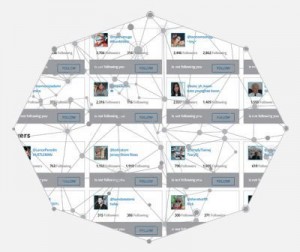During his podcast, The Soul of Business, Blaine Bartlett asked me about my method for assessing conflict and other problems; I described some of the questions I use to start to identify what’s actually happening and how things are going wrong. In the first stages of analysis, these questions often fall into two categories: Is the conflict about the person, or is it about the situation?
Questions Can Lead to New Answers
Clients often start out by telling me what someone is doing wrong or unsuccessfully; very often, they include their beliefs about why the person behaves a certain way, or what they perceive to be the person’s hidden intentions. Instead of taking their comments at face value, I ask questions like “Tell me how you know that. What’s your evidence for that?” I want to draw out the backstory and behaviors that caused them to form those judgments, and I get the chance to learn more about their point of view and how they use data.
If they’re stuck making assumptions about somebody else in a negative way, I often ask, “Why would a smart person do such a stupid thing?” This helps them pause for a moment: After a moment of reflection, they may admit they don’t really know the answer. “I know this person is not a fool,” they’ll tell me. “They’re distressing me to no end, they’re in my team’s way, and they’re disrupting our work. But why would they be doing that?”
Then we start to brainstorm a little bit. They realize there’s something that person needs to accomplish or that they’re afraid of, or on the hook for; or else they think about the tools or resources the person needs but hasn’t gotten. Rather than asserting “She’s out to get me” or “He hates my guts,” or any of those antagonistic things where they feel like the target —these new possibilities help us find productive avenues for change or adjustments.
Understanding the Business Is Crucial
Some of my questions are meant to elicit whether the people involved have the business and technical acumen to deal with the issues they’re confronting. When someone is unfamiliar with the business model or unskilled in the necessary aspects of their function make more mistakes and messes, they’re more likely to feel under attack. They may not understand why people are bringing them so many problems, simply because they don’t have the necessary context and experience.
For one woman I coached, resolving the issue literally came down to teaching her math. Until she was able to analyze the data, she wasn’t sufficiently capable of deciding what did and didn’t need to be addressed, how to set priorities, or how to make a case to her management for the resources she needed.
Consider the State of Affairs
The big underlying circumstantial question comes down to whether or not success is possible under the current conditions, so the next thing I question is the background of the situation. People are usually comfortable explaining the facts from their perspective, so I ask them to tell me how the work is supposed to work.
When leaders bring me in to coach someone, it usually means that the individual is perceived as lacking something or somehow falling down on the job. Usually there’s already some dissatisfaction or disappointment on the leader’s part — and probably distress, if not resentment and fear, on the part of the person to be coached. I try to get a thorough history of the leader’s relationship and interactions with the person I’m supposed to coach. Often the leader focuses on whatever the person isn’t getting right — something the leader is confident has already been explained to them. But the leader is often not at all aware of how the conditions look from the employee’s perspective.
For example, at one company, it turned out that the individual’s assignment was not well thought out, and there were numerous reasons why the person was struggling. The leader did not realize this until I asked repetitive questions: “Why did you assign him this way? Why did you assign him those people? Why did you assign him these goals? Do you see how A might counteract B? Do you see how this is a structural problem?”
As soon as you see a leader light up in recognition that a situation is somewhat different from what they previously perceived it to be, you have the possibility of changing their point of view. They can see that this person may not be failing and making problems; maybe it’s actually the situation that’s unworkable. If we can modify the situation, the employee might be able to succeed, the work will progress, and the leadership won’t have a failure on their hands.
If you find yourself in the midst of a frustrating situation, questioning the reactions of all the people involved can help you find new ideas about how to proceed, as well as discover the impacts of the underlying causes and surrounding circumstances.
Business & Finance Articles on Business 2 Community
(37)





